There are several questions and posts about mixed models for more complex experimental designs, so I thought this more simple model would help other beginners in this process as well as I.
So, my question is I would like to formulate a repeated measures ancova in R from sas proc mixed procedure:
proc mixed data=df1;
FitStatistics=akaike
class GROUP person day;
model Y = GROUP X1 / solution alpha=.1 cl;
repeated / type=cs subject=person group=GROUP;
lsmeans GROUP;
run;
Here is the SAS output using the data created in R (below):
. Effect panel Estimate Error DF t Value Pr > |t| Alpha Lower Upper
Intercept -9.8693 251.04 7 -0.04 0.9697 0.1 -485.49 465.75
panel 1 -247.17 112.86 7 -2.19 0.0647 0.1 -460.99 -33.3510
panel 2 0 . . . . . . .
X1 20.4125 10.0228 7 2.04 0.0811 0.1 1.4235 39.4016
Below is how I formulated the model in R using 'nlme' package, but am not getting similar coefficient estimates:
## create reproducible example fake panel data set:
set.seed(94); subject.id = abs(round(rnorm(10)*10000,0))
set.seed(99); sds = rnorm(10,15,5);means = 1:10*runif(10,7,13);trends = runif(10,0.5,2.5)
this = NULL; set.seed(98)
for(i in 1:10) { this = c(this,rnorm(6, mean = means[i], sd = sds[i])*trends[i]*1:6)}
set.seed(97)
that = sort(rep(rnorm(10,mean = 20, sd = 3),6))
df1 = data.frame(day = rep(1:6,10), GROUP = c(rep('TEST',30),rep('CONTROL',30)),
Y = this,
X1 = that,
person = sort(rep(subject.id,6)))
## use package nlme
require(nlme)
## run repeated measures mixed model using compound symmetry covariance structure:
summary(lme(Y ~ GROUP + X1, random = ~ +1 | person,
correlation=corCompSymm(form=~day|person), na.action = na.exclude,
data = df1,method='REML'))
Now, the output from R, which I now realize is similar to the output from lm():
Value Std.Error DF t-value p-value
(Intercept) -626.1622 527.9890 50 -1.1859379 0.2413
GROUPTEST -101.3647 156.2940 7 -0.6485518 0.5373
X1 47.0919 22.6698 7 2.0772934 0.0764
I believe I'm close as to the specification, but not sure what piece I'm missing to make the results match (within reason..). Any help would be appreciated!
UPDATE: Using the code in the answer below, the R output becomes:
> summary(model2)
Scroll to bottom for the parameter estimates -- look! identical to SAS.
Linear mixed-effects model fit by REML
Data: df1
AIC BIC logLik
776.942 793.2864 -380.471
Random effects:
Formula: ~GROUP - 1 | person
Structure: Diagonal
GROUPCONTROL GROUPTEST Residual
StdDev: 184.692 14.56864 93.28885
Correlation Structure: Compound symmetry
Formula: ~day | person
Parameter estimate(s):
Rho
-0.009929987
Variance function:
Structure: Different standard deviations per stratum
Formula: ~1 | GROUP
Parameter estimates:
TEST CONTROL
1.000000 3.068837
Fixed effects: Y ~ GROUP + X1
Value Std.Error DF t-value p-value
(Intercept) -9.8706 251.04678 50 -0.0393178 0.9688
GROUPTEST -247.1712 112.85945 7 -2.1900795 0.0647
X1 20.4126 10.02292 7 2.0365914 0.0811

